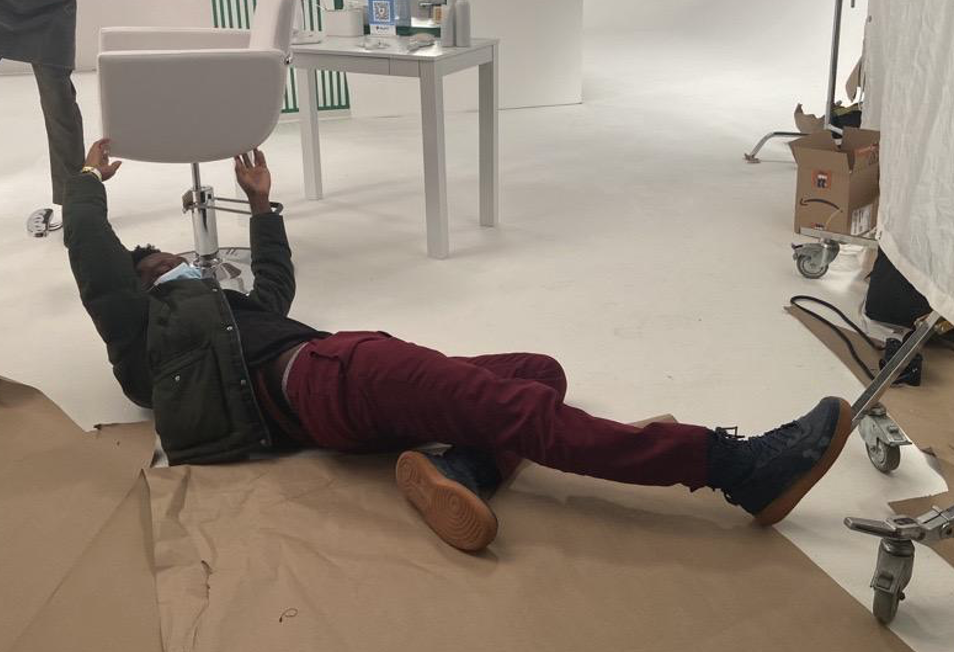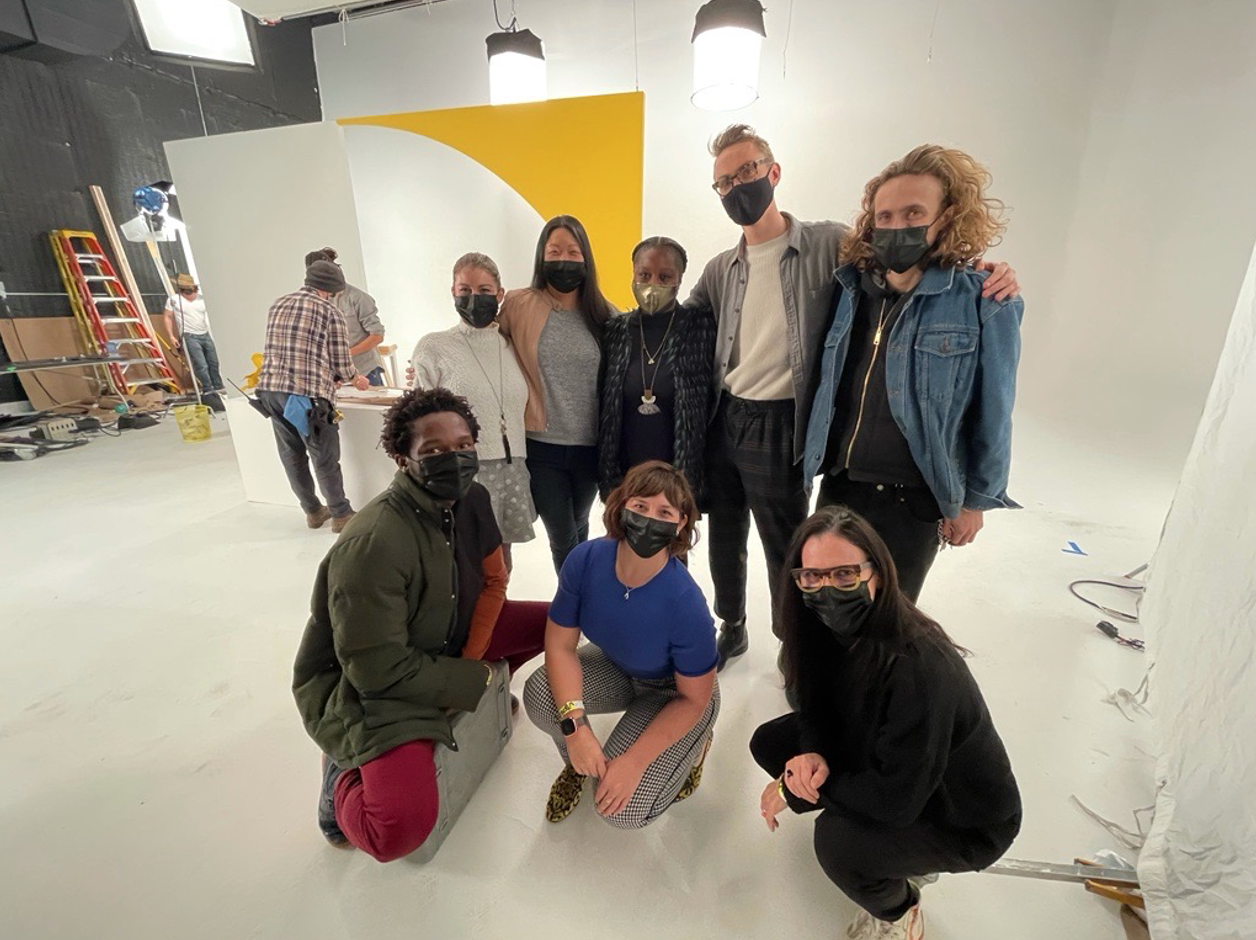February 18, 2022
By Madu Udeh, Intern, RAPP NY Integrated Production
In the summer of 2021, I joined RAPP NY as an Integrated Production intern. As a Southern California resident, that meant I spent most of my time looking at a computer screen in my bedroom (and in my pajamas some days), thousands of miles away from the RAPP New York office where the ads were being made. In December, however, thanks to SVP, executive producer Heather Salkin, I received the opportunity to fly out to New York and get hands-on, on-the-ground, production experience at my first RAPP shoot…and to finally see my coworkers outside of my screen.
5:42 pm PST: I sit eagerly in the plane silently watching Alvin Ailey’s “Revelations” with only the drone of the plane accompanying my thoughts. I forgot my headphones in the flurry to pack for this trip after I got out of my last scheduled class of the semester. I wonder what the set will be like — how I can be most helpful — and I make a mental note to take lots of written notes. I shut my eyes…
5:30 AM EST: And hours later, I open them at the Gum Studios Stage C in Brooklyn. I’m no longer an intern behind a laptop. I’m an actual PA on set. I start asking how I can assist. I meet a spunky sound tech, and he puts me to work right away. He talks about his stepson being a touring dancer and his wife a ballet instructor as he coaches me on how to use “comms.” I learn comms is a tool used by essential production personnel - in this case the director and the agency - to hear on-set audio better via a headset. We run into a snag because we’re both unfamiliar with the equipment —but we figure it out. He designates me as the comms point person for the day. I will instruct folks on how to use them, charge them when necessary and be responsible for the equipment.
7:21 AM EST: People start filing into the space. I introduce myself to folks on set and offer help. I get bits of people’s life stories mixed in with the pleasantries, and New York City begins to feel like more than just a piece of fruit.
I start working with the production manager to assemble the pages of the remote shoot guide in a binder. This is a critical document. The director, agency and other personnel on set will use this to stay on track throughout the shoot day. It has a schedule, script and shot list, with room for comments. I spent the day before the shoot with my supervisors, Integrated Production associate director Nyla Coffie and senior integrated producer Jillian Breslin, meticulously crafting the document. Being on set helps me understand how truly critical it is.
On the now buzzing set, I walk with the talent and wardrobe stylist from the wardrobe room down to a couch-laden video village, where the agency has set up camp. As Lindsay King, associate creative director, ponders while looking the talent up and down, I begin to understand: this is the approval process. (I missed the final wardrobe fitting as I was on my flight.) This is my first time seeing the process occur in real time:
“A belt change?” someone suggests.
“I don’t think the bag works,” another voice chimes.
“This does not go with the client’s color palette…”
Ahh, I get it now. This is what it looks like for the agency to be the eyes and ears of the brand on set.
Throughout the shoot day, I alternate between being glued to Heather's hip (quite literally sitting on the armrest of the couch behind her), watching her every move, and drifting around to see what help is needed while taking candid behind-the-scenes photos. I even end up in one:

5:44 PM EST: Around mid-shoot, I begin to help Nyla. Her job on set that day is to transcribe notes on EACH take. There are over 100 takes across four different setups. She pays close attention and marks down how the agency, client or production house feels about the take and/or what notes we took into the next take:
Needs to spin less
Needs to hold phone farther from body
Pitch of voice too high
Good
Ok
THAT’S THE ONE!
I sit beside her — sometimes taking over the note-taking process — transcribing the notes into a Word document to send to the director immediately following the shoot for post-production. This is essential due to the tight turnaround. These notes allow the director to start editing, eliminating any additional meetings or need for creative to rewatch the dailies before the round one edit. While taking notes, I notice how meticulous the director is in his shot selection, which I believe is a result of him being both the director and editor - not a typical scenario.
When I began at RAPP, it was during the post-production phase of a pharmaceutical client shoot. Being on set and paying attention to each take was a full-circle moment. I am eager now to start the post-production process and use my experiences on set to best aid the next part of the process.
Being a part of this shoot really helped me understand:
- Set etiquette — The importance of creating a lively and productive set by being respectful in your interactions between on-set departments
- Moving as a unit —- The expectations and responsibilities of the agency on set, such as constantly being in communication with the brand and ensuring everyone across agency departments is on the same page when making a decision
- True collaboration —- The relationship between creative, producers, brand and production company towards making a product everyone feels proud of
11:31 pm EST: From crafty, I grab a taco and a cucumber slice to munch on my walk to my room. As I lie in bed, my eyes ebb in and then finally out, satiated from the full day of learning.

About the Author:
Madu has been an intern at RAPP since June 2021. He started at RAPP after he learned of Heather’s work in experiential production and has gained invaluable experience learning about digital content production. He resides in California, where he is a junior at the University of Southern California. He hopes to one day work a

